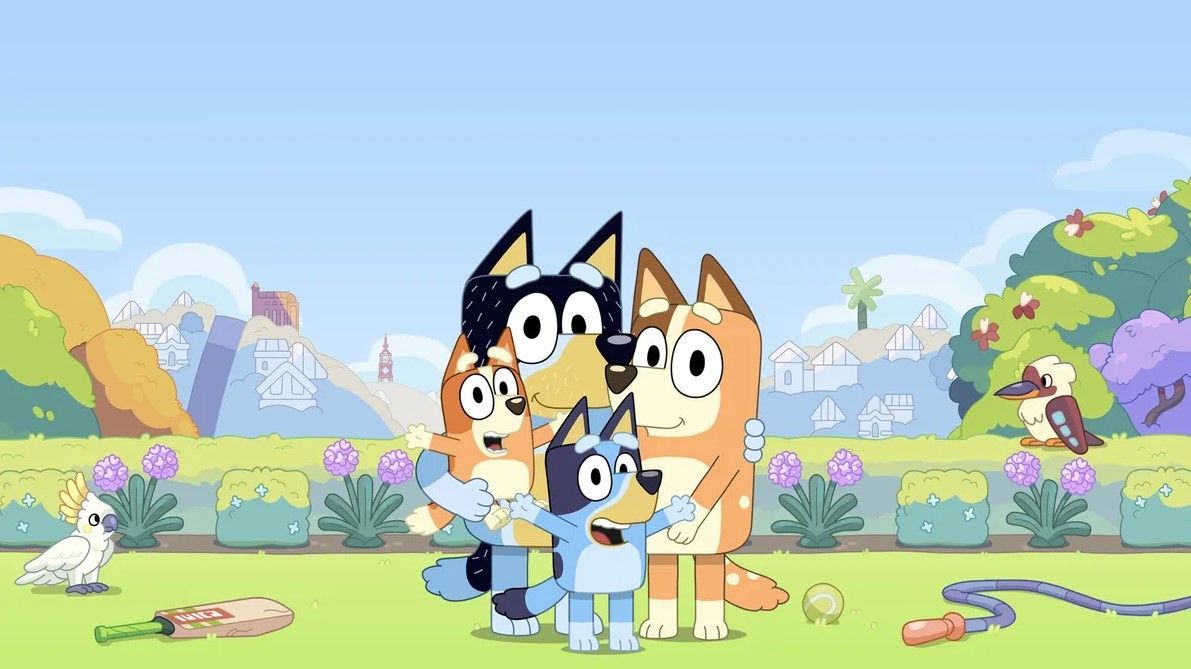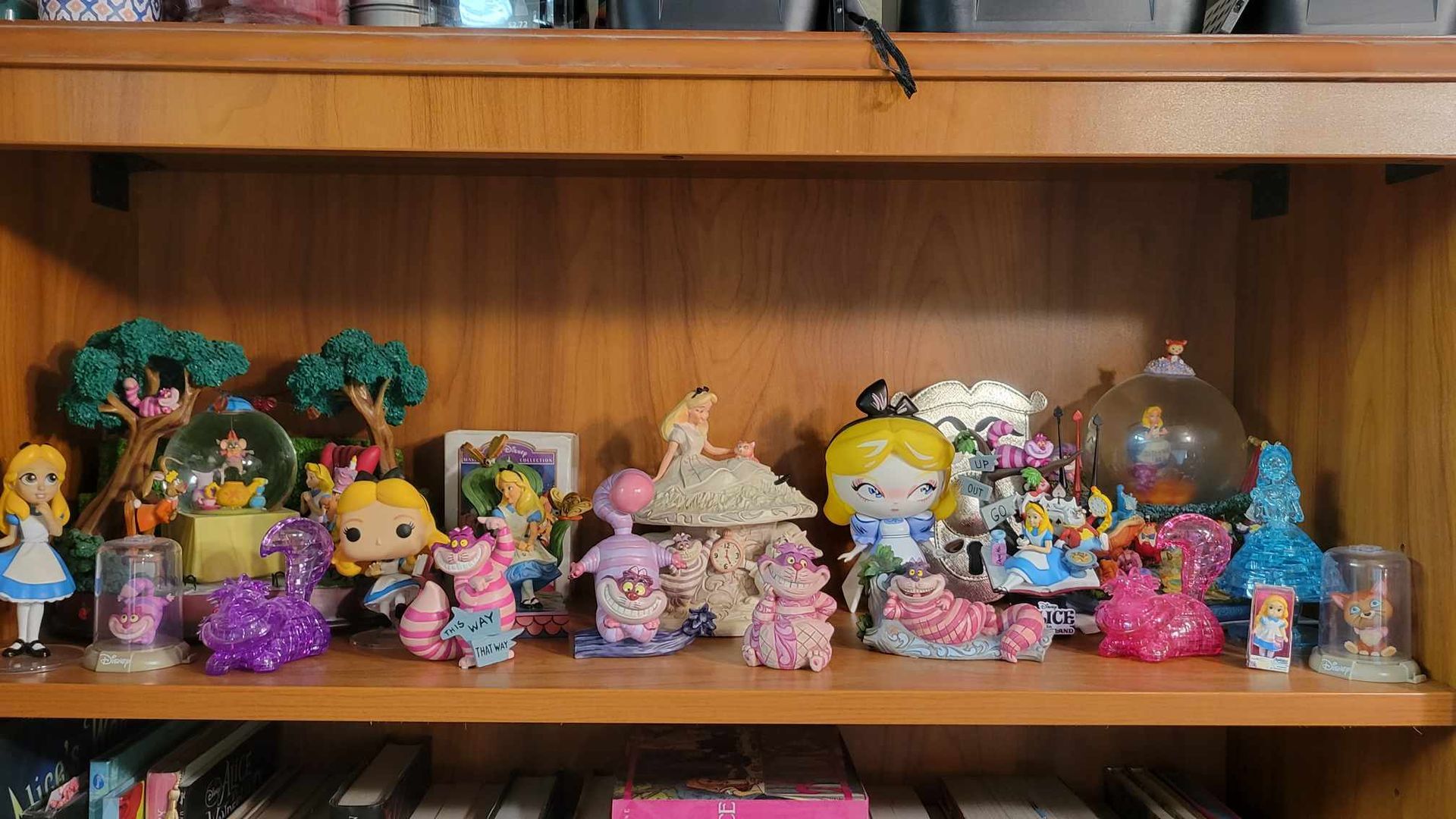Craig D. Barton is a creative consultant, editor, and writer, having written for and consulted on multiple Disney Editions books and various other projects. Besides being a self-described "DisNerd," Craig is an advocate for all arts, loves travel, movies, making his own eclectic music playlists, and, most of all, spending time with his family. Craig currently resides in Avondale, AZ with his lovely wife, quirky daughter, and neurotic yet lovable dog.
1929 - More Mice, and Silly Spooks That Dance
by Craig D. Barton
"The Walt Disney Company: 100 Years in 100 Weeks," is the brainchild of Craig D. Barton, presenting weekly posts on the history of the Walt Disney Company. Each post will cover a specific year in Disney's history, featuring essays, shared articles, guest authors, and yearly timelines, all leading up to the company's 100th Anniversary on October 16, 2023. Previous posts in the series can be viewed here..
Be sure to join us every Friday for the newest installment of "The Walt Disney Company: 100 Years in 100 Weeks!"
With his debut in Steamboat Willie at the end of 1928, Mickey Mouse was an instant success. Both critics and the public alike fell in love with the plucky little rodent, his girlfriend Minnie, and their adventures. With positive reviews came calls from film companies, looking for distribution deals. However, having learned his lesson from the loss of Oswald the Lucky Rabbit to Universal, Walt found these deals unappealing. While studios were eager to distribute the film, they were more eager to make Mickey their own. They offered Walt weekly wages and healthy contracts, but only under the condition of owning the rights. “No deal,” said Walt. Cinephone salesman Pat Powers encouraged Walt to stay independent, and stick with him for distribution. According to Walt Disney biographer Bob Thomas, Powers told Walt, “I want to promote Cinephone. That’s my only interest: promoting Cinephone. Your Mickey Mouse can do it for me. I’ll make you a better deal than any of the majors.” Offering to sell cartoon rights to theater owners in each state, Powers promised Walt advances for the Mickey cartoons, and said he would only keep 10% of the profits for himself.
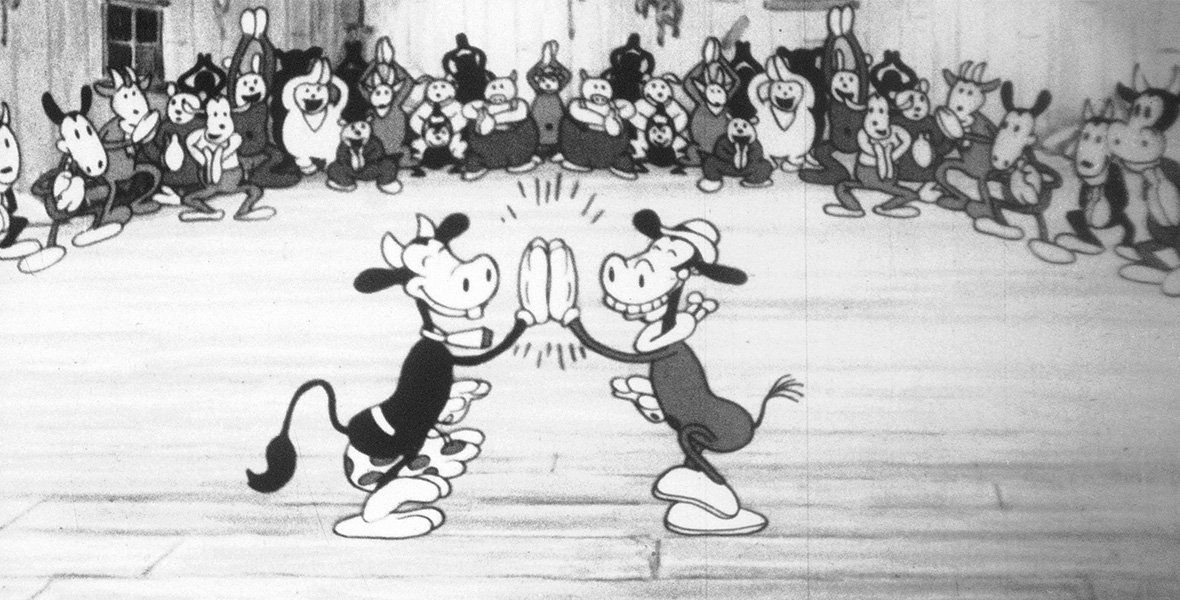
1929's "The Barn Dance" also marked the debut of Clarabelle Cow and Horace Horsecollar, two mainstays in early Mickey cartoons. Clarabelle was udderly mooving...
Of course, what Walt failed to realize was that the contract he signed with powers also included a ten-year lease of the Cinephone sound equipment at $26,000 a year. Roy pointed this out to Walt, wondering how, regardless of the success of their new favorite mouse, they would ever manage to turn a profit between the lease and growing expenses of each Mickey short. Walt’s reply? “What the hell. I needed the equipment.” (Roy, ever the businessman, actually found a way to help in this predicament. Part of the Powers deal included two sound trucks – Roy would rent them out to “five-day movie” producers, who could not afford the prices of the more commercially known sound companies. This was not the first time, nor would it be the last, that Roy’s prowess would prove invaluable to the Walt Disney Company.)

One of Disney's (Powers) Cinephone recording trucks, on the set of "She Goes to War," 4/29
He found that idea from his music director, Carl Stalling. Carl suggested a different cartoon – one set solely to music, and one without the studio’s beloved mouse. Stalling asked Walt to consider a “graveyard frolic,” an animation set to Edvard Grieg’s “March of the Trolls.” Walt took Stalling’s idea to his head animator, Ubbe “Ub” Iwerks, and together they worked out a storyline of skeletons rising from heir graves and letting loose with a little spooky fun. Ub set to work, animating the feature almost entirely solely. (Side note – this was actually a point of contention between Walt and Ub. Ub was the chief animator, and Walt felt his time was way to valuable to do all of the “in-between” animations. Ub, on the other hand, took great pride in his detail, one of the reasons his work was so highly regarded.)
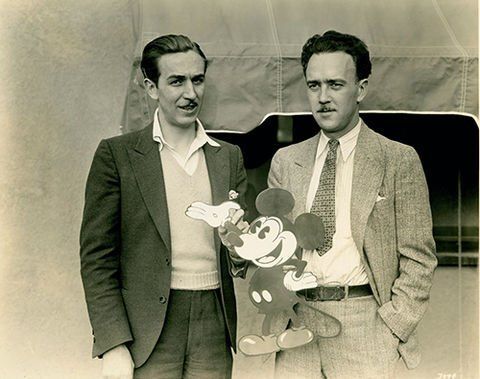
Walt DIsney and Ubbe "Ub" Iwerks, with Mickey Mouse.
During the scoring session in New York, in which Stalling recorded his own score inspired by both the Grieg piece and Saint-Saëns’ “Dance Macabre,” Walt was encouraged, writing Iwerks back in California. “I am glad the spook dance is progressing so nicely – give her Hell, Ubbe – make it funny and I am sure we will be able to place it in a good way. I have them all worked up and raring to see it – so we can’t disappoint them – we have a wonderful score to it. The music sounds like a little symphony.”
Of course, this “little symphony” was to become the first in the Silly Symphonies series, “The Skeleton Dance.”
One person who was not worked up by the new series was Walt’s New York distributor, Pat Powers. Upon receiving a print to screen for potential customers, his response to Walt was short and pointed: “They don’t want this. MORE MICE.”
Undeterred, Walt knew what he had on his hands was something that the public would love – he just had to have the opportunity to show them. Walt arranged for Fred Miller, the owner of the Carthay Circle Theater in Los Angeles, to screen the short. Miller loved the new concept and booked The Skeleton Dance into his theater with overwhelmingly positive results and reviews. The public and press alike were enthralled and tickled by the macabre musical scene, as skeletons romped and danced through the graveyard, even using each other as musical instruments!
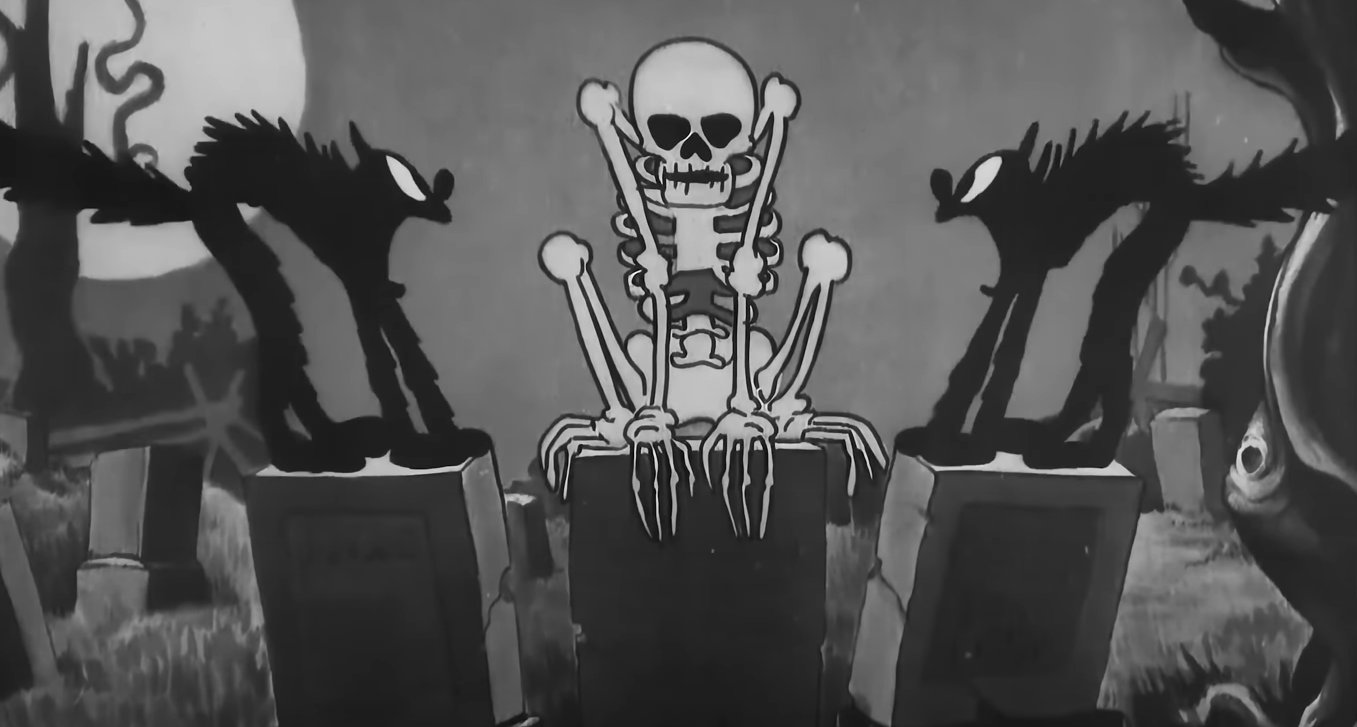
The short made a lasting impression on one young theatergoer. Recalled science-fiction author and icon Ray Bradbury, “All of my life I always knew I was going to end up with Walt Disney, one way or another. When I was 7, I went to the movies and saw ‘The Skeleton Dance,’ it was a matinee. I stayed through the film, a dreadful film, probably something with Adolphe Menjou and lots of mush, you know. But I stayed through to see ‘The Skeleton Dance’ so many times that my father had to come and drag me out of the theater. When I came to Los Angeles, many years later, and went to the county museum (L.A. County Museum’s “Retrospective Exhibition of the Walt Disney Medium,” which covered Disney artistry from Steamboat Willie to Fantasia), there were cels, celluloid cels, of ‘The Skeleton Dance.’ I said, ‘Oh my god, I would give my life to someday own some of these cartoon cels."
Walt used the positivity from the screenings and reviews to convince Powers of its marketability – he proved once again that he knew his audience well. The Silly Symphonies were a hit. Mickey was taking off even more – “Mickey Mouse Clubs” were popping up in movie theaters across the country – Mickey was a national treasure. Surely this spelled almost certain financial success for the Walt Disney Company…
At least it might have if Walt received any actual pay from Pat Powers.
After weeks with no pay being sent from Powers, Roy Disney headed to New York to straighten out finances and figure where their share of the profits from the Mickey shorts were going. But getting a straight answer out of Powers proved near impossible for Roy, who returned home discouraged. “That guy’s a crook,” he told Walt in late 1929. “Go back there and see for yourself.” Walt made plans to do just that, feeling confident he could get things settled quickly. After all, he had two successful series and a top animator in Ub Iwerks – what could possibly go wrong?
1929
- Mickey (Voiced by Walt) speaks for the first time in “Karnival Kid” (July 31) – First words are “Hot dog!”
- Debuts of Clarabelle Cow and Horace Horsecollar
- “The Skeleton Dance” – The first Silly Symphony – Premieres on August 22
- The Walt Disney Studio renames “Walt Disney Productions, Ltd,” along with the forming of Walt Disney Enterprises and Disney Film Recording Company.
1929 Animated Releases:
Mickey Mouse - The Barn Dance - March 14
Mickey Mouse - Plane Crazy - March 17
Mickey Mouse - The Opry House - March 28
Mickey Mouse - When the Cat's Away - May 3
Mickey Mouse - The Barnyard Battle - June 2
Mickey Mouse - The Plowboy - June 28
Mickey Mouse - The Karnival Kid - July 31
Mickey Mouse - Mickey's Follies - August 28
Silly Symphonies - The Skeleton Dance - August 29
Silly Symphonies - El Terrible Toreador - September 26
Mickey Mouse - Mickey's Choo-Choo - October 1
Mickey Mouse - The Jazz Fool - October 15
Silly Symphonies - Springtime - October 24
Silly Symphonies - Hell's Bells - November 21
Mickey Mouse - Jungle Rhythm - November 15
Mickey Mouse - The Haunted House - December 2
Silly Symphonies - The Merry Dwarfs - December 19
Mickey Mouse - Wild Waves - December 21st
*"The Walt Disney Company: 100 Years in 100 Weeks" is a project conceived by Craig D. Barton and presented by Communerdy. It is in no way affiliated with The Walt Disney Company, and any opinions presented within its content are that of the author(s). For more updates, follow us on https://www.instagram.com/disney100in100/ .


